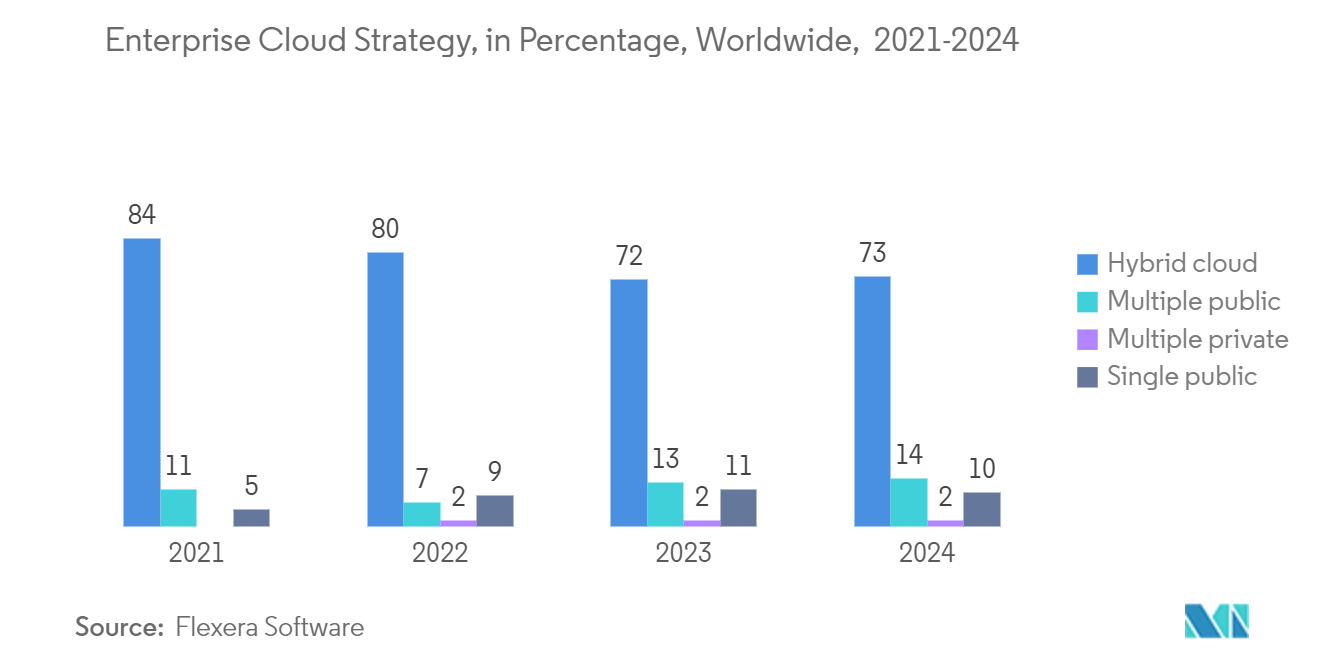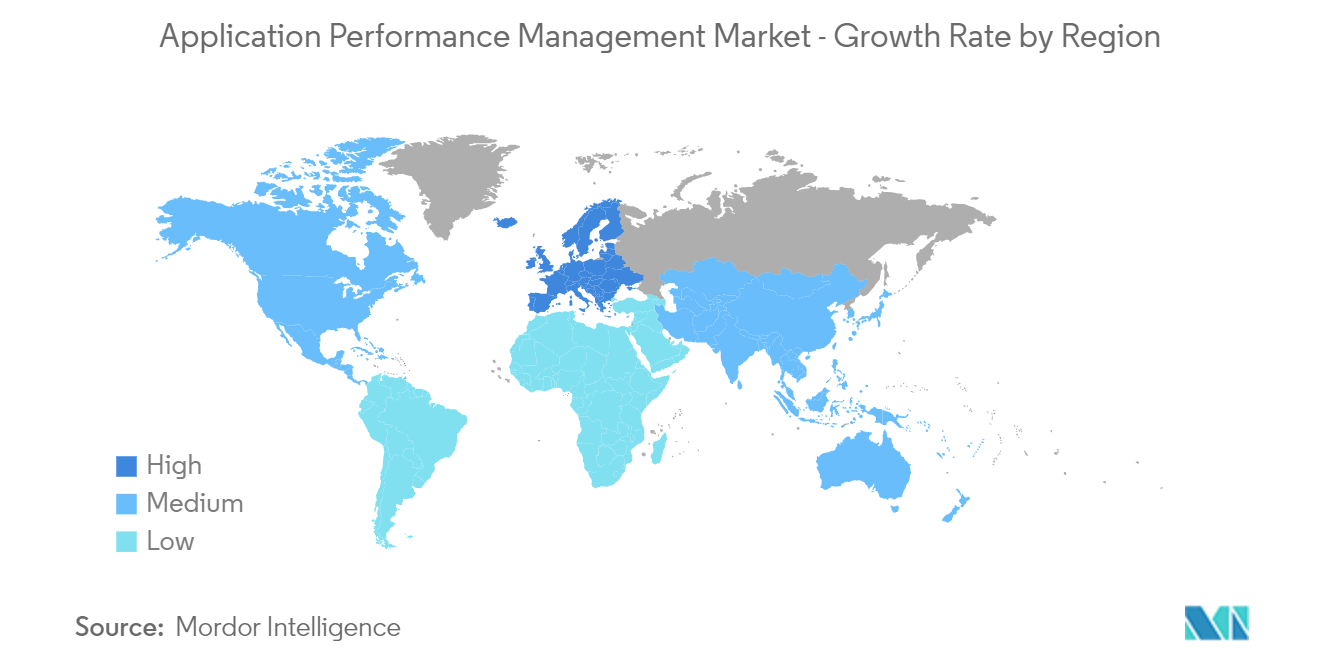Market Trends of Application Performance Management Industry
Adoption in Large Enterprises to Drive Market Growth
- Organizations capable of hosting these systems independently and on a large scale are drawn to direct software solutions. The demand for this is driven by improved security and data control. APM systems that are directly supplied as software solutions can also be custom tuned to client needs, integrating seamlessly with the application that has to be controlled. Due to total access to parameters, this not only enables analytics enhancement and administration but also offers better capabilities.
- Additionally, as hybrid clouds' capabilities advance, more large businesses are integrating APM systems, which leads to the on-premises deployment of software solutions and their extension to public clouds. The software for APM systems is gradually moving towards unified models, which can analyze performance, business, and user experience simultaneously.
- The interconnectedness and intimate ties between the various segments have caused this trend to change. For instance, application performance impacts user experience, and business analysis can help identify peak hours or exit points. The application performance management systems' holistic approach has dramatically expanded their functionality, consequently significantly boosting the industry under study.
- Numerous programs provide application performance management, which has several benefits. For instance, solutions for monitoring an organization's web server can be found in this category. Additionally, it aids in app discovery and dependency mapping (ADDM), finds and classifies all servers and apps, alerts users, and automates threat-related activities. It facilitates reporting and offers a personalized dashboard. Additionally, application management software products have great scaling potential and are less expensive to deploy.
- When used effectively, APM tools offer significant insight into the customer experience when clients interact with a business on a technical level, providing a rare chance for companies to match their technical performance with their goals better. The growing demand to enhance the customer experience is anticipated to fuel market expansion.

Europe to Hold Significant Market Share
- The Central Europe region's APM service providers aggressively participate in mergers and acquisitions to support the sector's expansion. To become the industry leader in European managed services for sophisticated and mission-critical cloud applications, Sentia, a Netherlands-based Azure Expert MSP, has acquired Dutch-Danish MSP Ymir. While ExtraHop, AppDynamics, and Dynatrace are among the companies that regularly cooperate with Ymor, the latter is known as an expert in application performance.
- To increase efficiency and cut costs, many governments in the European region are migrating their IT services to the cloud. Government organizations can concentrate their IT resources on core business, increase data security, and prioritize human resources by replacing disconnected and outdated legacy systems with centralized shared services.
- Companies like Amazon provide S3 cloud storage classes for data preservation and application hosting to address increased cloud adoption. Lower costs make these solutions an attractive option for the region's SMEs. The expanding use of data centers and web servers to host applications has boosted the European market's demand for application performance management.
- The need to solve, assess, and improve business processes in this region is driven by growing company globalization, the spread of mobile and cloud computing, and rising levels of business competition.
- European APM companies have begun to exhibit interest in having their products considered as AIOps tools. Data is already abundant in IT operations and other organizations, and as microservices, the cloud, and the Internet of Things (IoT) develop, this situation is expected to get more complex.


